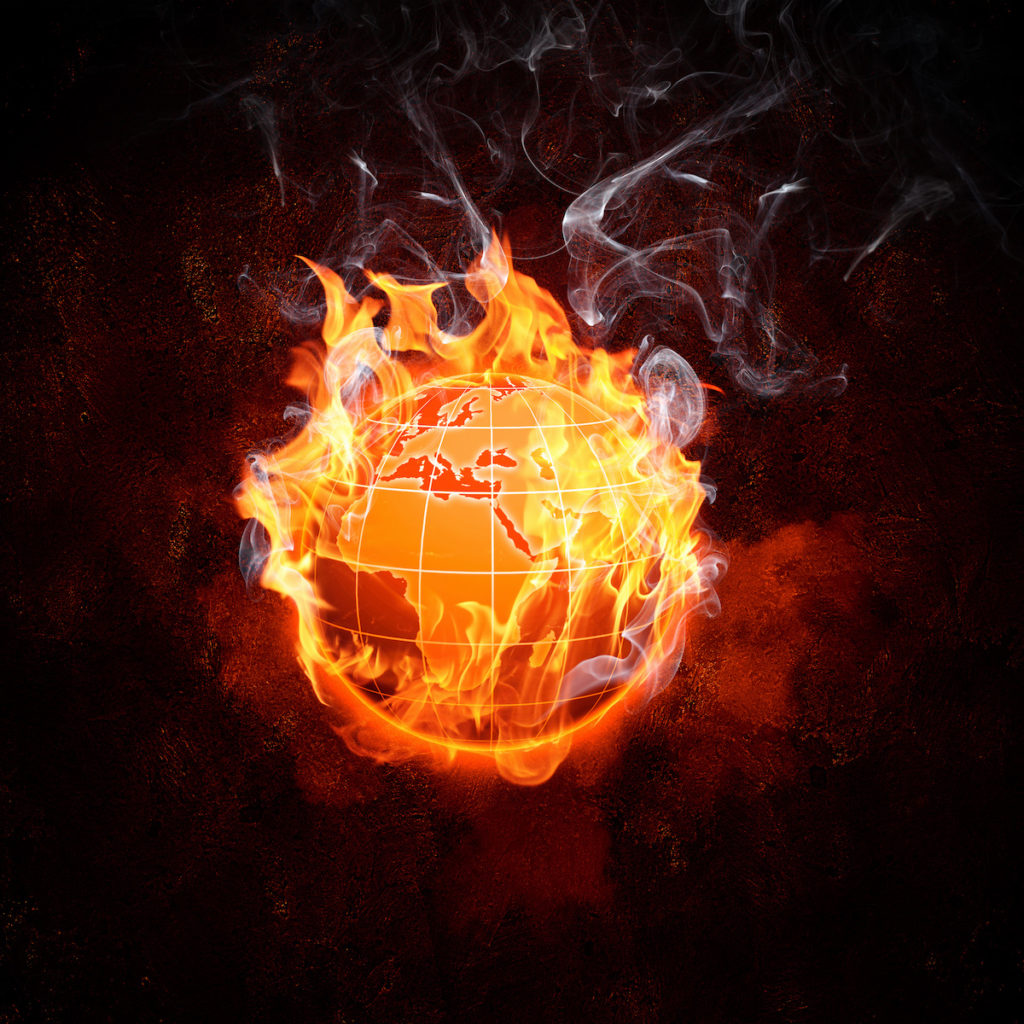
The Day of YHVH’s Wrath
There comes a time in the chronology of end times events that accompany the return of Yeshua when YHVH will pour out his wrath upon rebellious men. The Bible refers to this as “the day of YHVH” or “the day of his wrath” — a phrase which occurs more than two dozen times in prophetic writings of Isaiah, Ezekiel, Joel, Amos, Obadiah, Zephaniah, Zechariah and Malachi. What is this day?
Is the “day of YHVH’s wrath” a literal day, or a time period, since the Hebrew word for day (Heb. yom)can mean both? The prophet Isaiah may give us a clue. In several places, he mentions “the day of YHVH’s vengeance” (or words to this effect). This is the time period when YHVH will judge the nations including Babylon the Great, which is in existence at Yeshua’s second coming (see Rev 17, 18 and 19). In three places, Isaiah indicates that the day of YHVH will last for one year (Isa 34:8; 61:2 and 63:4). Interestingly, in Isaiah 63:4, the prophet couples the idea of the day of YHVH’s vengeance being a year long with the jubilee year — “the year of my redeemed has come.” This occurs as the Messiah (the subject of Isa 63:1–6) judges the enemies of Israel (notably Edom) as he is at the same time about to redeem (i.e. regather and return scattered Israel to its Promised Land inheritance.) It appears that while Yeshua is judging Israel’s enemies at his second coming, he will at the same time begin regathering the lost and scattered 12 tribes of Israel in a major way. Yeshua seems to allude to this in Matthew 24:31
What Is the Wrath of YHVH/Elohim?
In the Book of Revelation, the term wrath of God/Elohim or similar language is found ten times in reference to YHVH’s fierce judgments against unrepentant and rebellious sinners. It is my belief that these judgments are yet to occur and are connected with the end times just prior to the return of Yeshua the Messiah.
But in the context of the full counsel of YHVH’s Word, what specifically is the wrath of Elohim/YHVH?
The term “the wrath of Elohim” or similar language is used in numerous places in the Scriptures, and refers to YHVH’s bringing severe judgments against men for their wickedness. Listed below are all the instances in the Scriptures where the phrase “the wrath of Elohim” or similar language is found.
- The wrath of Elohim came upon the children of Israel when they rebelled against YHVH (Ps 78:31).
- All those who are ungodly will experience the wrath of Elohim eventually (John 3:36; Eph 5:6; Rom 1:18; 2:5–8; Col 3:6).
- YHVH’s wrath was evidenced at various times against the ancient Israelites (2 Chron 24:18; 29:10; 2 Chron 30:8; 2 Chron 36:16; Ezra 5:12; Ezek 5:13; 7:19; 8:18).
- Elohim’s wrath came against the nations at various times for their wickedness (Jer 10:10; Nah 1:2; Jer 25:15; Mic 5:15; 2 Pet 2:9).
- YHVH’s wrath was expressed against Jerusalem at its fall (Isa 51:17, 20).
- YHVH’s wrath was expressed against Edom (Isa 63:3, 5, 6; Ezek 36:5–6).
- YHVH’s wrath was expressed against the nations for their wickedness toward Israel (Deut 32: 41,42; Mic 5:15; Zec 8:2).
- YHVH’s wrath will be poured out in end times against his enemies (Isa 66:15).
- The seven trumpets of the Book of Revelation are the wrath of Elohim (Rev 6:16–17).
- The seven bowl judgments of the Book of Revelation are the wrath of Elohim (Rev 11:18; 14:10; 15:1, 7; 16:1,19).
As we can see from the evidence, the Bible records numerous “wrath of Elohim” events at various times throughout the long time span of biblical history. Whenever YHVH intervenes in the affairs of men and brings judgment against the wicked, this is the wrath of Elohim. In this study, we are dealing with the wrath of Elohim in the last days prior to the return of Yeshua as prophesied in the Book of Revelation.
When Does the Period of YHVH’s Wrath — the “Day” of YHVH Begin?

As noted earlier in this study, the end times wrath of Elohim occurs after the great tribulation. This we know from Matthew 24:29 where Yeshua describes events that will occur “immediately after the tribulation.” These events (the sun be darkened, the moon not giving its light, the stars falling from heaven, and the powers of heaven being shaken) occur at the sixth seal, which describes identical cosmic disturbances (Rev 6:12), and this event is described as the beginning of the day of YHVH’s wrath (verse 16).
At this time, Yeshua will be coming in the clouds of heaven (Matt 24:30) in the midsts of great heavenly signs and wonders (verse 29; Rev 6:12–14), and he will gather his elect from the four corners of the earth (verse 31; Rev 7:1–16). But the Scriptures still don’t say that he has “touched down” on earth yet. All eyes will see him in the earth’s atmosphere (Matt 24:30). They shall all see “the face of him who sits on the throne” and will know that the time of “the wrath of the Lamb” has come (Rev 6:16). Where else do we see the throne of Elohim and the Lamb together? The Book of Revelation records several instances where this occurs (Rev 5:1, 6, 13; 7:10,17; cp. 21:23; 22:3). Revelation 21:23 and 22:3 tie the throne of Elohim, the Lamb (Yeshua), the temple of Elohim with the New Jerusalem. They are together. What can we make of this? Fasten your seat belts! The answer may surprise you. It is very likely that when Yeshua appears in the clouds, he will be accompanied by the New Jerusalem, the heavenly temple and the throne of Elohim. In other words, in a certain sense, heaven will “descend” into the earth’s atmosphere, and will come into view just after the great tribulation and at the sixth seal. It seems very possible, if my analysis is correct, that the New Jerusalem may be hovering in the earth’s atmosphere (where the clouds are) for all humans to see with their natural eyes!
Continue reading
